D4-Y2 Judy
From the author:
I would like to present my last build (D4-y2 Judy form Fine Molds). I have to admit I thought that it would have Japanese quality. The kit has very good details and metal machinegun. But… Yeah, there is a lot of buts. The kit has a big amount of fitting issue. Almost no part fits well. I had to use a lot of putties. The worst part of the work was sanding, sanding, sanding… Comparing price vs quality highly do not recommend this kit form beginners. The belts as well as gun on the wing was fully scratch build. Last remarks: it is my first kit paint with an airbrush.
D4-Y2 Judy:
The Yokosuka D4Y Suisei (彗星 Suisei, "Comet", Allied reporting name "Judy") is a two-seat carrier-based dive bomber developed by the Yokosuka Naval Air Technical Arsenal and operated by the Imperial Japanese Navy from 1942 to 1945 during World War II. Development of the aircraft began in 1938. The first D4Y1 was complete in November 1940 and made its maiden flight at Yokosuka the following month.
While the aircraft was originally conceived as a dive bomber, the D4Y was used in other roles including reconnaissance, night fighter and special attack (kamikaze). It made its combat debut as a reconnaissance aircraft when two pre-production D4Y1-Cs embarked aboard the Sōryū to take part in the Battle of Midway in 1942. It was not until March 1943 that it was accepted for use as a dive bomber. The early D4Y1 and D4Y2 featured the liquid-cooled Aichi Atsuta engine, a licensed version of the German Daimler-Benz DB 601, while the later D4Y3 and D4Y4 featured the Mitsubishi MK8P Kinsei radial engine.
Like many other Japanese aircraft of the time, the D4Y lacked armour and self-sealing fuel tanks and it was not until the final variant, the D4Y4, that the aircraft was given bulletproof glass and armour protection for the crew and fuel tanks. Nevertheless, The D4Y was one of the fastest dive bombers of the war, particularly the D4Y4 whom Max Gadney said was the "fastest dive-bomber of World War II" and that it was "faster than the zero" if RATO was equipped. Only the delays in its development hindered its service while its predecessor, the slower fixed-gear Aichi D3A, remained in service much longer than intended. Famously, a D4Y was used in one of the final kamikaze attacks in 1945, hours after the surrender of Japan, with Vice Admiral Matome Ugaki in the rear cockpit.

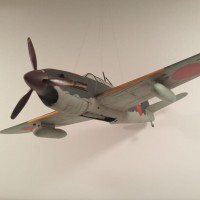
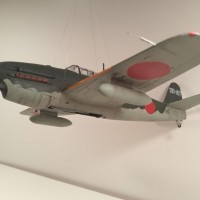


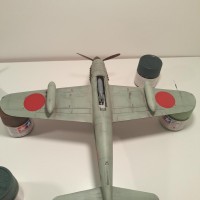
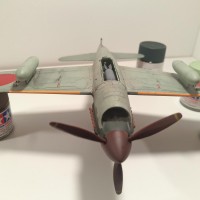

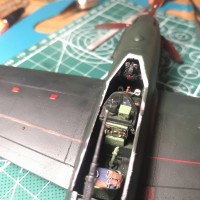

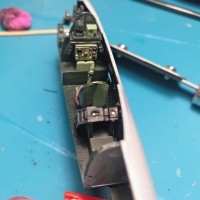
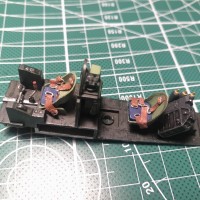

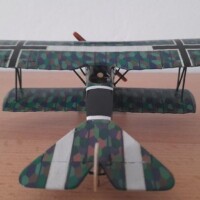
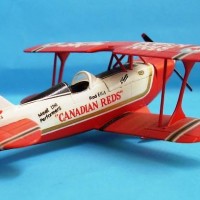
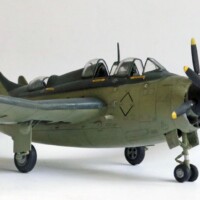

very nice lukasz...i'm right in the middle of building this kit myself and your right it is an ill fitting low quality project in my opinion also...you never see them built either...looks like a great first outing with the airbrush too
1 attached image. Click to enlarge.
Thanks and good luck with your build Bob.
Came out nice despite all the fit issues! Looks good!
It is nice to hear such thing from so experienced modeller as you Greg. Thx.
Nice job on this, sir...many of my builds were "hangers" as well. 🙂
Great result from an awful kit. I think you managed (due to the awful instructions) to do both the supposed night fighter (the rear gun) and the dive bomber. Easy to do with those instructions (ask me why there's no D4Y2 by me to be seen anywhe4re).
Here's a photo of a D4Y3 Judy, the only one of the type left. It's at Planes of Fame, where it only taxys (the main spar is badly corroded and not easily replaced).
2 attached images. Click to enlarge.
I've always wanted this kit but I will heed to your warning. From what I read, the outcome is fantastic
I hope to do an equally good on a 72 scale. Excluding maybe only bombs and cannons in one option. Besides, the effect is fantastic.
Tahnk You @lis. It was a struggle. I am posting materials received from another iM member (Ulrich Schutt - @ulrich). I hop it will be helpful in Your future builds.
Best regards.
Materials:
https://www.deviantart.com/davidkrigbaum/art/Rocket-and-Comet-MXY7-and-D4Y-686391914
http://warbirdswalkaround.wixsite.com/warbirds/yokosuka-d4y
https://www.net-maquettes.com/pictures/d4y-suisei-comet-judy/
https://hiveminer.com/Tags/d4y%2Cjudy
http://447.insidetrackmagazine.com/wwii-aircraft/wwii-japan/judy/
@dalixan Thank you for materials. As I remember D4Y with yellow "13" made Fujimi im 72th scale. 🙂
I found also some from AZ-Model:
https://www.scalemates.com/kits/az-model-az7630-yokosuka-d4y5-judy-ijn-bomber--1244106